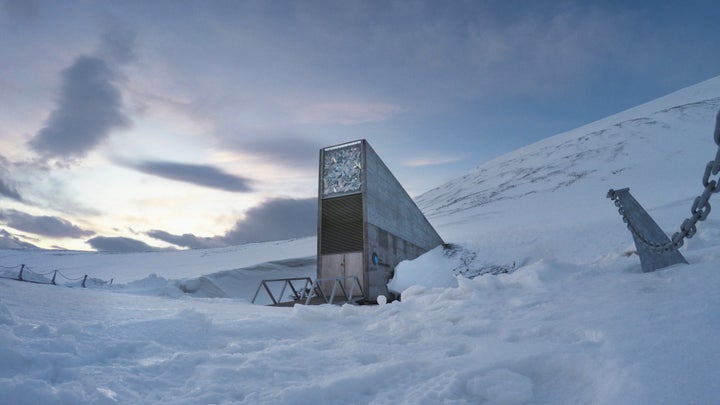This is a part of a series focused on people in need and the people willing to step up to the challenge.
“If you can look into the seeds of time And say which grain will grow and which will not, Speak, then to me...” - Macbeth, Act I, Scene III
There is a vault near the Arctic Circle that is fit for a Snow Queen. It’s cold, isolated, and perfect for storing treasures. The treasures here are not precious metals or cryptocurrencies. Rather, the treasures are seeds that are protected from environmental catastrophe.
Since 1903, more than 93% of fruit and vegetable varieties in the U.S. have gone extinct. At first, crop variety may seem a trifle, but the impact of crop extinction has a serious effect on our food supply.
In a recent study funded by the Government of Norway, 29% of the total wild relative plant species are completely missing from the world’s genebanks. Specifically, the crops that are under threat are:
- 6% of cereal crops (wheat, maize, rice, sorghum etc.)
- 18% of legume species (the wild relatives of beans, peas, and lentils)
- 13% of botanical family (e.g. potato, tomato, eggplant, and pepper)
The World Hamper

Svalbard Seed Vault
“You are to take every kind of food that is to be eaten and store it away as food for you and for them.” - Genesis 6:21
The Crop Trust manages the Svalbard Seed vault, which stores over 880,000 seeds from around the world. It is one of the most environmentally and geologically stable locations for seed preservation and security. The vault is buried deep inside a mountain where the permafrost helps to chill the rooms to -18℃. This optimal temperature ensures low metabolic activity, which keeps the seeds viable for long periods of time.
“The Svalbard Seed Vault is a library of life for which we have an incomplete card category.” - Cary Fowler
Storing seeds at Svalbard Seed Vault is free and the depositor owns the seeds. If and when a withdrawal occurs, it’s bittersweet. In September of 2015, the Syrian CGIAR Genebank made a withdrawal due to the conflict in Aleppo, Syria. Although the transaction was unfortunate, the value of hosting seeds in a remote location demonstrated the Vault’s value.
Reaping What We Sow
Cary Fowler of the Crop Trust explains that in order to secure our food supply under our dynamic climate conditions, we need to develop crop varieties that can cope with heat, drought, flood, and other extremes.
The use of crop genetic diversity in plant breeding can contribute significantly to protecting the environment:
- Crop varieties that are resistant to pests and diseases can reduce the need for application of harmful pesticides
- More vigorous varieties can better compete with weeds, reducing the need for applying herbicides
- Drought resistant plants can help save water through reducing the need for irrigation
- Deeper rooting varieties can help stabilize soils
- Varieties that are more efficient in their use of nutrients require less fertilizer.
Discovering and preserving these qualities begin with finding and collecting seeds. According to Crop Trust, it only costs $625 to conserve a single crop variety. Mr. Fowler explains that there are many orphan crops have value, utility, and integrity, but haven’t been adopted for its intrinsic traits.
Feeding the World
Lathyrus Sativa is also known as Grass Pea. It is a robust crop that can withstand severe drought and flooding. It is often the only alternative to starvation when other crops fail. But the Grass Pea also has a neurotoxin potent enough to cause lathyrism, which permanently paralyzes adults from the knees down and cause brain damage in children with prolonged consumption.
Breeders and farmers are now exploring ways to capitalize its resilience without the side effects of the neurotoxin. This is just one example of using crop diversity to curb hunger.
Today, GoPro announced a partnership with Crop Trust and created a video (above) to help raise awareness of our global food crisis. Together, Gopro is matching donations made to the Crop Trust to further its mission of raising $50,000.
Extinction is not about the last individual dying. It’s about a species’ inability to evolve. It’s easy to think that the future of our crops is dependent on us. But how dependent are we on our crops?
